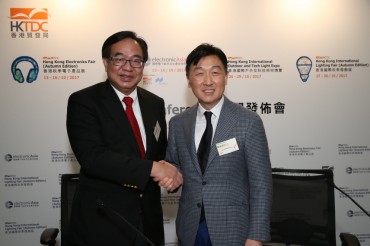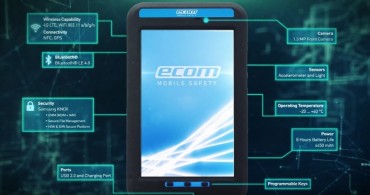Linköping, Sweden, March 1 (Korea Bizwire) – Teledyne SP Devices, a business unit of Teledyne Technologies Incorporated (NYSE: TDY), today announced the release of ADQ32 and ADQ33 – a fourth-generation modular data acquisition boards optimized for high-throughput applications. The combination of on-board open field-programmable gate array (FPGA) and high-speed data streaming makes them ideal even for the most computationally demanding applications.
The dual-channel 12-bit digitizers support synchronous sampling at 2.5 gigasamples per second (GS/s) per channel for ADQ32 and 1 GS/s per channel for ADQ33 and feature an open Xilinx Kintex Ultrascale KU040 field-programmable gate array (FPGA). The digitizers are streamlined for high-volume applications and are therefore suitable for integration by original equipment manufacturers (OEMs) in areas such as swept-source optical coherence tomography (SS-OCT), time-of-flight mass spectrometry (ToF MS), and distributed optical fiber sensing (DOFS). ADQ33 is not export-controlled and therefore does not require any license.
Custom application-specific digital signal processing (DSP) can be performed in real-time in the on-board FPGA to characterize signals and extract valuable information. It can also be used to perform data reduction so that the output rate matches the 7 Gbyte/s sustained transfer capacity of the PCI Express interface. The data can then be post-processed either on the central processing unit (CPU) of the host PC, or transferred via peer-to-peer to a graphics processing unit (GPU).
This architecture offers great flexibility and allows the designer to use the most suitable type of processing resource for a given task. Examples of application-specific DSP include fast-Fourier transform (FFT) and k-space remapping for SS-OCT, and waveform averaging and zero suppression for ToF MS.
In addition to the high streaming rate and computational flexibility, the ADQ32 also offers excellent analog performance in terms of the effective number of bits (ENOB), spurious-free dynamic range (SFDR), and more. Hardware trigger, selection of internal/external clock, and general-purpose input/output (GPIO) simplify system-level integration. Please refer to the datasheet for full specifications.
Visit https://spdevices.com/products/hardware/12-bit-digitizers/ADQ32
About Teledyne SP Devices
Teledyne SP Devices designs and manufactures world-leading modular data acquisition and signal generation instruments. The company’s products utilize patented calibration logic, the latest data converters, and state-of-the-art FPGA technology resulting in an unrivaled combination of high sampling rate and resolution.
Products are available with a range of application-specific features and embedded, real-time signal processing. This helps our customers to overcome performance bottlenecks, shortens time-to-market, and provides system-level advantages within a wide range of application areas. SP Devices’ products are deployed across a wide variety of industries, including analytical instruments, remote sensing, scientific instrumentation, medical imaging, and more.
© 2021 by Teledyne Signal Processing Devices Sweden AB. All rights reserved. Specifications are subject to change without notice.
Technical contact
Ulrik Lindblad
Marketing Manager
+46 13 465 06 04
Customer contact
SPD_Sales@Teledyne.com
+41 78 845 56 57
Website: https://www.spdevices.com
Source: Teledyne SP Devices via Media OutReach








